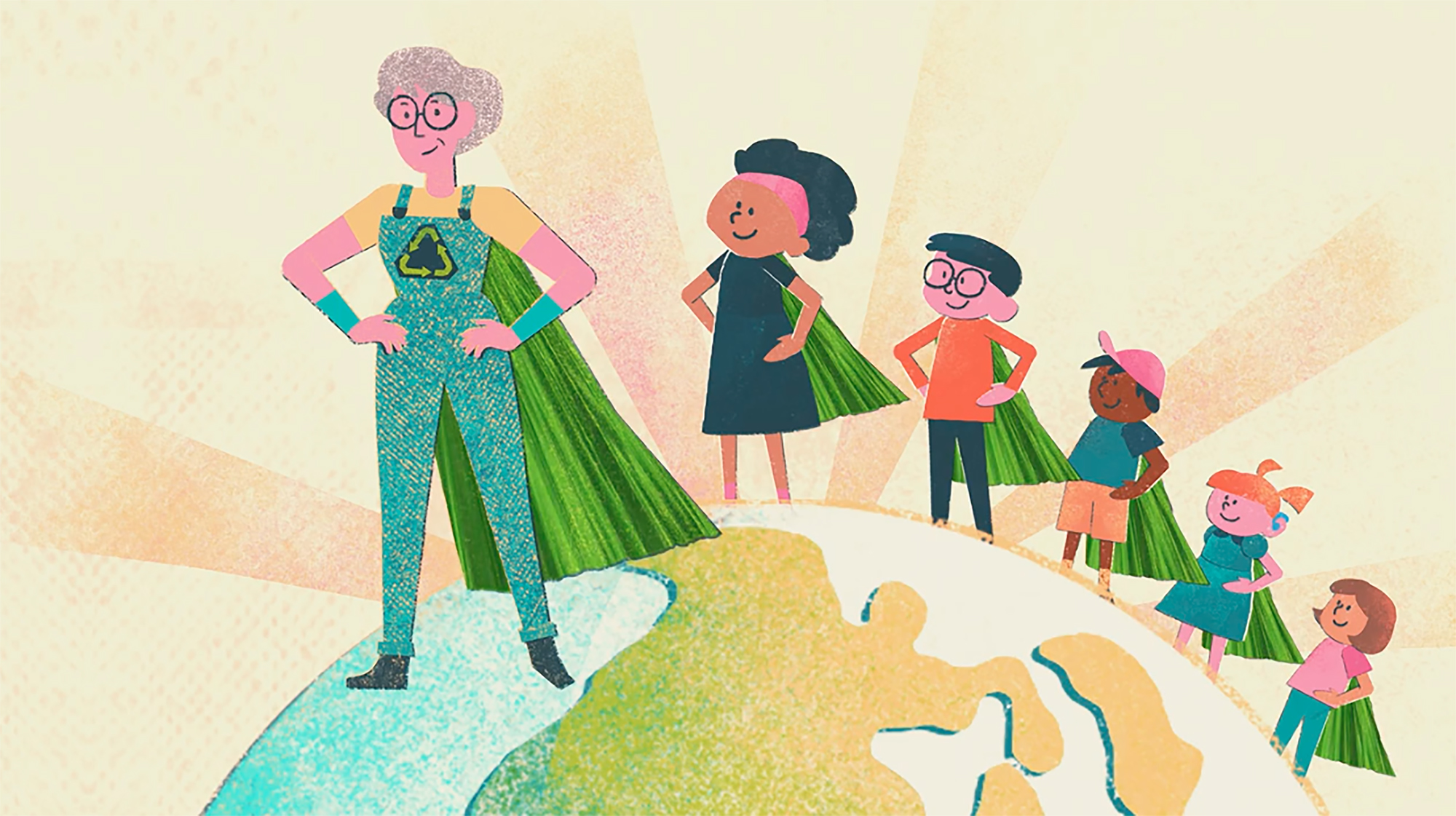Milly Zantow

Milly Zantow standing beside stacked bales of plastic ready for recycling
Biography
Before recycling was a global habit, it was a wild idea in the mind of a woman named Milly Zantow. Born Mildred Louise Taylor in 1923 on an Oklahoma farm, Milly learned early how to make the most of what you have. She gave up college scholarships to care for her sick sister, took night classes she could barely afford, and worked through World War II for the federal agency that would later become NASA. Her life was never about convenience—it was about purpose. And eventually, that purpose would lead her to reshape how the world handles plastic waste.
In the 1970s, Milly moved to Wisconsin and began volunteering for the International Crane Foundation. A trip to Japan in 1978 opened her eyes to something revolutionary: communities sorting their waste into neat little bundles for recycling. Back home, she realized her county landfill was filling up fast, and most of the trash? Plastic. The kind no one knew how to reuse. But Milly didn’t wait for someone else to fix the problem. She did the research, figured out how to tell different plastics apart, and convinced manufacturers to give recycling a try. When others saw garbage, Milly saw potential.
She and her friend Jenny Ehl opened E-Z Recycling in Sauk County, grinding up plastic by hand and helping their neighbors build community-based recycling programs from scratch. Milly didn’t stop at sorting bins and collection centers, she wanted to make recycling easier for everyone. So she helped develop the numbered triangle system you’ve seen on the bottom of every plastic container. That little symbol? It was Milly’s way of saying, 'We can do this smarter.' The Society of the Plastics Industry made it official in 1988, and the system is now used worldwide.
But Milly wasn’t finished. She helped write Wisconsin’s 1990 state recycling law, which required communities to collect recyclables and divert them from landfills. At the time, it was the most comprehensive law of its kind in the United States. Milly became a go-to advisor for towns and cities across the country (and even internationally) looking to start their own programs. Her work wasn’t flashy, it was grounded, persistent, and deeply local. That’s what made it so powerful.
Milly Zantow passed away in 2014, but her legacy lives in every blue bin, every classroom that teaches the 3 Rs, and every plastic bottle that gets a second life. She once said, 'Waste is not waste until it is wasted.' It was more than a motto, it was a movement. From a grandmother in North Freedom to a global sustainability pioneer, Milly proved that when you care deeply, organize locally, and think systemically, you can change the world—one plastic triangle at a time.
Every time you flip a plastic bottle and see a little triangle with a number inside, you’re looking at Milly Zantow’s legacy. She turned a local landfill crisis into a global labeling system now printed on billions of products. Her work reminds us that environmental change isn’t only about high‑tech breakthroughs, sometimes it’s a grandma with grit, a clipboard, and a question nobody else bothered to ask.
?
How did Zantow’s trip to Japan spark her recycling idea, and what does that say about learning from other cultures?
Why is identifying different types of plastic essential for effective recycling?
What obstacles did Zantow face convincing companies to use recycled material, and how did she overcome them?
If you were redesigning today’s recycling symbols, what improvements would you add?
How can local action—like Zantow’s Sauk County center—scale up to state or national policy?
What modern waste problem (e‑waste, fast fashion, food scraps) needs a ‘Milly moment’ next?
Dig Deeper
When this problem-solver learned that a landfill in her Sauk County community was closing much earlier than it should, she got to work. Her activism and effort ended up making big changes in plastics recycling.
Discover more

Wangari Maathai
Wangari Maathai founded the Green Belt Movement, planted over 40 million trees in Kenya, and became the first African woman to receive the Nobel Peace Prize.

Benjamin Franklin
Printer, publisher, scientist, inventor, diplomat, and philosopher, Benjamin Franklin shaped nearly every aspect of early American life.

Sojourner Truth
Sojourner Truth was a formerly enslaved woman who became one of the most powerful voices in American history for abolition, women’s rights, and racial justice.
Further Reading
Stay curious!
